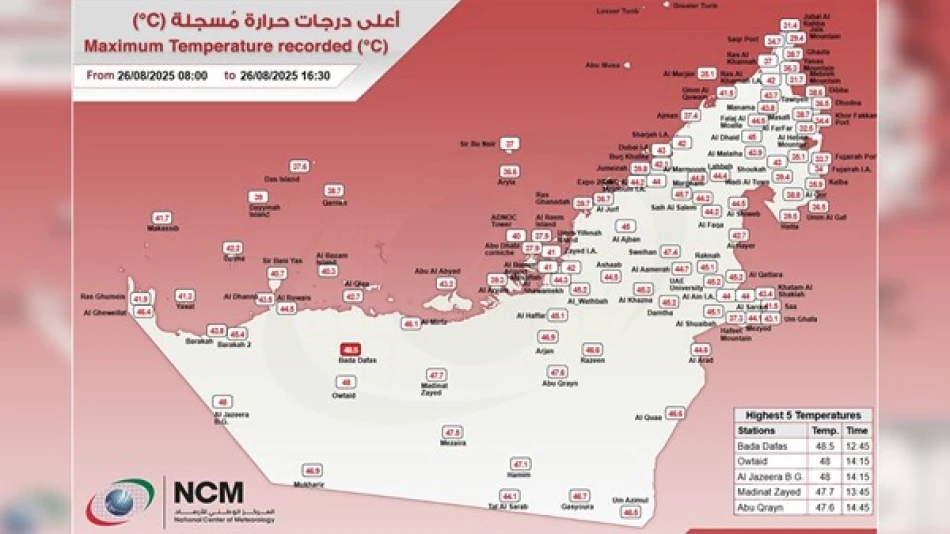
UAE Records Scorching Temperatures: 'Bada Daefi' Sets Sizzling Heat Record
UAE Records Scorching 48.5°C as Gulf Region Faces Intensifying Summer Heat Wave
The United Arab Emirates hit a blistering 48.5°C (119.3°F) on Tuesday, marking another extreme temperature milestone as the Gulf nation grapples with increasingly severe summer conditions. The record was set in Bada Dafas in the Al Dhafrah region at 12:45 PM local time, underscoring the mounting climate challenges facing one of the world's most energy-intensive economies.
Desert Interior Bears the Brunt of Extreme Heat
The National Center of Meteorology confirmed the temperature reading through its official monitoring network, with the Al Dhafrah region once again proving to be the country's hottest zone. This western region, characterized by vast desert landscapes and oil infrastructure, regularly experiences the UAE's most extreme temperatures during the peak summer months of June through August.
Al Dhafrah's geography makes it particularly susceptible to heat accumulation, with its inland location shielding it from the moderating effects of coastal breezes that provide some relief to cities like Dubai and Abu Dhabi. The region hosts significant portions of the UAE's oil production facilities, raising concerns about operational efficiency and worker safety during these temperature spikes.
Regional Context: Gulf States Under Pressure
The UAE's temperature reading aligns with broader regional trends across the Arabian Peninsula, where several countries have recorded similarly extreme temperatures this summer. Kuwait and Saudi Arabia have both exceeded 50°C in recent weeks, while Qatar and Bahrain have faced sustained periods above 45°C.
These temperatures place enormous strain on power grids as air conditioning demand soars. The UAE typically sees electricity consumption peak during summer months, with cooling accounting for up to 70% of total energy use in residential and commercial buildings.
Economic and Infrastructure Implications
For the UAE's diversified economy, extreme heat presents multiple challenges beyond immediate comfort concerns. The construction sector, crucial to the country's ongoing development projects, faces productivity losses and increased safety risks during peak temperature periods. Many outdoor work activities are restricted to early morning and evening hours during summer months.
The tourism industry, while primarily focused on winter months, must also adapt its infrastructure and offerings to accommodate year-round visitors. Hotels and attractions invest heavily in climate-controlled environments and indoor alternatives during the harshest summer periods.
Climate Adaptation Strategies
The UAE has positioned itself as a regional leader in climate adaptation and renewable energy development, partly driven by the practical necessity of managing extreme heat. The country's investments in solar power take advantage of abundant sunshine, while district cooling systems and energy-efficient building standards help manage the growing cooling demand.
Advanced weather monitoring systems like those operated by the National Center of Meteorology provide crucial data for emergency preparedness and resource allocation. These systems help authorities issue heat warnings and coordinate response measures during extreme weather events.
As global temperatures continue rising, the UAE's experience managing extreme heat offers valuable lessons for other regions facing similar challenges. The country's combination of technological solutions, infrastructure investment, and adaptive policies provides a framework for climate resilience in arid environments.
 Layla Al Mansoori
Layla Al Mansoori







